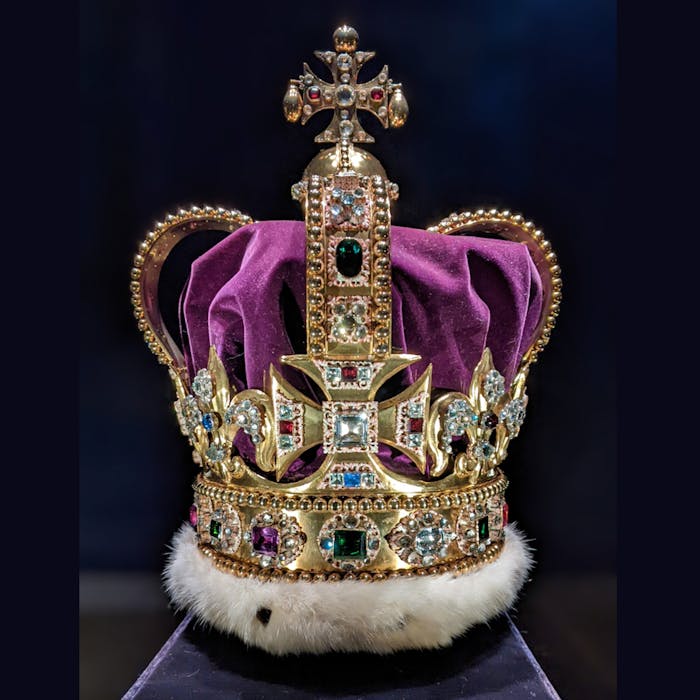
St Edward's Crown - the Coronation Crown
The St Edward's Crown will be worn by King Charles III at his coronation ceremony. This most precious of the crown jewels is only used at coronations, and was last worn by the late Queen at her coronation.
Named after Edward the Confessor, this crown is used solely for the moment of crowning.
Traditionally, it was not allowed to leave Westminster Abbey, where it was kept with the regalia, meaning a second crown had to be created for the procession out of the Abbey.
The solid gold frame is adorned with 444 precious stones. It features four crosses-pattee and four fleurs-de-lis and weighs nearly five pounds.
The two arches are surmounted by an orb and a cross, representing the Christian faith.
It was made for Charles II in 1661 to replace an earlier crown said to have belonged to King Edward the Confessor.
King Edward the Confessor wore his crown at Easter, Whitsun, and Christmas.
In 1161, nearly a hundred years after his death, he was made a saint, and objects connected with his reign became holy relics. The monks at his burial place of Westminster Abbey claimed that Edward had asked them to look after his regalia in perpetuity for the coronations of all future English kings. Although the claim is likely to have been an exercise in self-promotion on the abbey's part, it became accepted as fact, thereby establishing the first known set of hereditary coronation regalia in Europe.
The crown is first recorded as having been used for the coronation of Henry III in 1220.
St Edward's Crown rarely left Westminster Abbey, but when Richard II was forced to abdicate in 1399, he had the crown brought to the Tower of London, where he symbolically handed it to Henry IV, saying "I present and give to you this crown with which I was crowned King of England and all the rights dependent on it".
It was used in 1533 to crown the second wife of Henry VIII, Anne Boleyn, which was unprecedented for a queen consort. In the Tudor period, three crowns were placed on the heads of monarchs at a coronation: St Edward's Crown, the state crown, and a "rich crown" made specially for the king or queen.
After the English Reformation, the new Church of England denounced the veneration of medieval relics and, starting with the coronation of Edward VI in 1547, the significance of St Edward's Crown as a holy relic was played down in the ceremony.
During the English Civil War, Parliament sold the medieval St Edward's Crown, regarded by Oliver Cromwell as symbolic of the "detestable rule of kings", and this medieval treasure disappeared forever.
However, Charles II had the crown jewels remade - including St Edward's Crown. It was supplied by the Royal Goldsmith, Sir Robert Vyner.
In 1671, Thomas Blood briefly stole the crown from the Tower of London, flattening it with a mallet in an attempt to conceal it.
As per tradition, King Charles III will wear the St Edward's Crown when he is officially declared as the King during his Coronation. This will be the first and only time that Charles will wear this particular crown. An alternate crown is used for the procession after the coronation and for state openings of parliament.
Further reading
Links to external websites are not maintained by Bite Sized Britain. They are provided to give users access to additional information. Bite Sized Britain is not responsible for the content of these external websites.
